#lebanese lit
Text

Kahlil Gibran, excerpts from Sand and Foam [ID in ALT]
#q#lit#quotes#literature#kahlil gibran#sand and foam#infinitely and inexpressibly#reading#lebanese lit#m#x
2K notes
·
View notes
Text
" Travel and tell no one,
live a true love story
and tell no one,
love happily
and tell no one,
people ruin
beautiful things."
- Khalil Gibran
3 notes
·
View notes
Photo
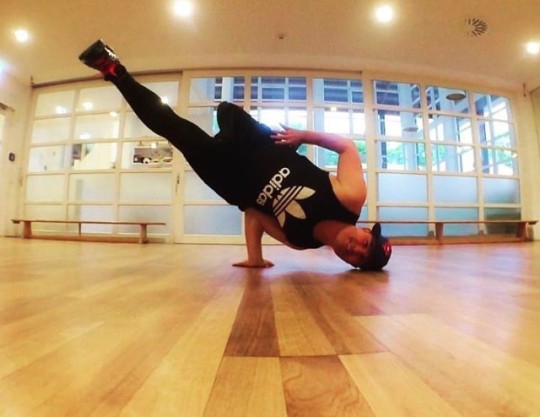
Allways keep your #skills in shape and good... have a nice day 👌✨💫 #bestoftheday #hiphop #breaking #breakdance #bboy #trickshot #fit #lit #style #dance #danceclass #jamelomar #beautiful #like #follow #instalikes #instadaily #lebanese #romanian #hamburg #photooftheday #pictureoftheday ⚡️ (hier: KAIFU LODGE) https://www.instagram.com/p/Cn4fZg1MM04/?igshid=NGJjMDIxMWI=
#skills#bestoftheday#hiphop#breaking#breakdance#bboy#trickshot#fit#lit#style#dance#danceclass#jamelomar#beautiful#like#follow#instalikes#instadaily#lebanese#romanian#hamburg#photooftheday#pictureoftheday
8 notes
·
View notes
Text
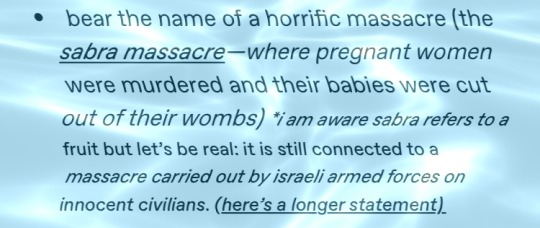
Wild that this post has 11,000 likes when it’s spreading such blatant fucking disinformation.
“Sabra” is word Israelis use to refer to an Israeli Jew. The "longer statement" attempts to refute the idea that Sabra was named after the Hebrew term by saying that the massacre happened in the 1980s, and the character didn't exist until the 1990s. Clearly, this person didn't do the world's most minimal amount of research. Let's get into it real quick--
Sabra's first full appearance was in Incredible Hulk #256, published in February 1981. She had a named cameo from the same run six issues earlier, in February 1980. So she was a planned and named character in development at least as early as 1979. The Sabra and Shatila massacre began on 16 September 1982, two years after Sabra made her debut in the comics.
Given her name and original design, Marvel's Sabra is likely influenced by the character named "Sabraman" by Uri Fink, an Israeli comic book creator. Sabraman's origins date back to 1978-- four full years before the Sabra and Shatila massacres.
This is a nitpicky point, but why are you following a Jewish discourse blog if not for nitpicky points? The Israeli Defence Forces were involved in the Sabra and Shatila massacres. There's no question about that. They authorized it, provided funds for it, and offered logistical support for it. But they did not carry it out. A Lebanese Christian Nationalist militia carried it out. Why lie about that? Israeli forces supported the murder of civilians! They lit up the sky for days so that the massacre could continue into the night! Why do you need to lie and say they were holding the guns? Is what they did not bad enough for you? This is what I mean when I say that you guys would rather resort to conspiracy theories and misinformation than actually accurately criticize Israel for once.
So where did I get all these facts? Did I have to do some deep dive into comics of the 1970s and 80s? Pull up niche and obscure military journals about the Lebanese Civil War? Nope! I got all that information by... looking at Wikipedia pages. I did double-check Incredible Hulk #250 to ensure that she was already named Sabra in 1980. She was. I also looked around for any articles that backed up the claim that fetuses were cut out of women's wombs during the Sabra and Shatila massacre and... I didn't find any. Al Jazeera doesn't even mention it. If you can find a reputable source for that, please send it to me! Until then, I'm gonna rule this as flat-out blood libel.
You may be asking yourself, why didn't Marvel change Sabra's name in 1982 when the tragedy occurred? Aren't they at least responsible for that? And personally, I think you'd be right. But Marvel didn't budge on Black Panther (named July 1966) when the Black Panther Party (named October 1966) was founded. It doesn't seem like they were interested in making character changes due to political pressures back then. Whether that's a good thing or not is a different story.
And finally, no, this post is not anything close to an endorsement of the new Captain America movie. I'd been planning on boycotting the movie named after an antisemitic conspiracy theory, from the company that butchers any Jewish representation they don't completely ignore, since before y'all found out about Sabra's existence. I just honestly thought the antisemitic nonsense about this character would be coming from the right, not the left.
Edit: Fixed formatting mistakes. Tumblr does not fucking like Hebrew text.
#I know I literally just responded to an ask by saying I don’t do media news coverage#but I’ve been a marvel comics fan for literal decades so I wasn’t about to take this one sitting down
54 notes
·
View notes
Text
This video made me homesick ?? 😢💓 As a Greek, my culture includes Orthodoxy since it's our ethnoreligion, and suddenly I feel that I have so much in common with so many people around the world!
I was also excited because some of the Christian communities shown here are ancient, and have persisted despite centuries-long prosecutions and pressures! (When talking about the "first" and the "ancient" Christianity we're talking about Orthodoxy or dogmas linked to Orthodoxy.)
I'm referring to the era before the Western European colonization. It was when people came to it freely and what we today call "Catholicism" wasn't what they came into. The Christians in these areas were culturally linked more to the Eastern Roman Empire (Byzantium) and to the Orthodox creed.
Christianity's home is the Middle East. Starting from Jerusalem, it spread to the whole Levant region. Assyrian, Lebanese, Syrian, Jordanian, and Armenian people came to Christianity in large numbers from the 1st century already. Antioch has been a stronghold of Christianity, and a producer of the brightest Orthodox minds.
The West Arabian Peninsula (Hejaz region) held the majority of Christian Arabs. Christians lived around Mecca and Yathrib before the advent of Islam. One of the earliest Christian church buildings ever, known as Jubail Church, is located in Saudi Arabia and it was built around the 4th century.
Christianity in Africa first arrived in Egypt in approximately 50 AD. By the end of the 2nd century it had reached the region around Carthage. In the 4th century, it arrived to modern-day Ethiopia and Eritrea (the Aksumite empire), and the region was one of the first in the world to adopt Christianity as its official religion. The Nubian kingdoms of Nobatia, Makuria and Alodia followed two centuries later. From the late 5th and early 6th century, the region included several Christian Berber kingdoms.
This is the chant, in Arabic (with subs in many languages). There's a Greek version too but on youtube I only found the singing version (lit. "ψαλτοτράγουδο"):
youtube
youtube
#Feel free to search for more denominations in the aforementioned regions bc there's not enough room here to get into the hundreds of details#about each community#And it goes without saying that there are all sorts of Christians in these regions today#not just orthodoxes#orthodoxy#religion#tradition#arabic#christian arabs
44 notes
·
View notes
Text
So who is Baal?
Baal or Baʻal, was a title and honorific meaning 'owner', 'lord' in the Northwest Semitic languages spoken in the Levant during antiquity.
Baal is a God of fertility, weather, rain, wind, lightning, seasons, war, sailors and so on.
Baal worship is also called Baalism.

Solid cast bronze of a votive figurine representing the god Baal discovered at Tel Megiddo, dating to the mid-2nd millennium BC.
His holy symbols are bull, ram and thunderbolt.
Baal was worshipped in ancient Syria, especially Halab, near, around and at Ugarit, Canaan, North Africa and Middle Kingdom of Egypt.
Baʿal is well-attested in surviving inscriptions and was popular in theophoric names throughout the Levant but he is usually mentioned along with other gods, "his own field of action being seldom defined". Nonetheless, Ugaritic records show him as a weather god, with particular power over lightning, wind, rain, and fertility. The dry summers of the area were explained as Baʿal's time in the underworld and his return in autumn was said to cause the storms which revived the land. Thus, the worship of Baʿal in Canaan—where he eventually supplanted El as the leader of the gods and patron of kingship—was connected to the regions' dependence on rainfall for its agriculture, unlike Egypt and Mesopotamia, which focused on irrigation from their major rivers. Anxiety about the availability of water for crops and trees increased the importance of his cult, which focused attention on his role as a rain god. He was also called upon during battle, showing that he was thought to intervene actively in the world of man, unlike the more aloof El. The Lebanese city of Baalbeck was named after Baal.
The Baʿal of Ugarit was the epithet of Hadad but as the time passed, the epithet became the god's name while Hadad became the epithet. Baʿal was usually said to be the son of Dagan, but appears as one of the sons of El in Ugaritic sources. Both Baʿal and El were associated with the bull in Ugaritic texts, as it symbolized both strength and fertility. He held special enmity against snakes, both on their own and as representatives of Yammu (lit. "Sea"), the Canaanite sea god and river god. He fought the Tannin (Tunnanu), the "Twisted Serpent" (Bṭn ʿqltn), "Lotan the Fugitive Serpent" (Ltn Bṭn Brḥ, the biblical Leviathan), and the "Mighty One with Seven Heads" (Šlyṭ D.šbʿt Rašm). Baʿal's conflict with Yammu is now generally regarded as the prototype of the vision recorded in the 7th chapter of the biblicalBook of Daniel. As vanquisher of the sea, Baʿal was regarded by the Canaanites and Phoenicians as the patron of sailors and sea-going merchants. As vanquisher of Mot, the Canaanite death god, he was known as Baʿal Rāpiʾuma (Bʿl Rpu) and regarded as the leader of the Rephaim (Rpum), the ancestral spirits, particularly those of ruling dynasties.
From Canaan, worship of Baʿal spread to Egypt by the Middle Kingdom and throughout the Mediterranean following the waves of Phoenician colonization in the early 1st millennium BCE. He was described with diverse epithets and, before Ugarit was rediscovered, it was supposed that these referred to distinct local gods. However, as explained by Day, the texts at Ugarit revealed that they were considered "local manifestations of this particular deity, analogous to the local manifestations of the Virgin Mary in the Roman Catholic Church". In those inscriptions, he is frequently described as "Victorious Baʿal" (Aliyn or ẢlỈyn Baʿal), "Mightiest one" (Aliy or ʿAly) or "Mightiest of the Heroes" (Aliy Qrdm), "The Powerful One" (Dmrn), and in his role as patron of the city "Baʿal of Ugarit" (Baʿal Ugarit). As Baʿal Zaphon (Baʿal Ṣapunu), he was particularly associated with his palace atop Jebel Aqra (the ancient Mount Ṣapānu and classical Mons Casius). He is also mentioned as "Winged Baʿal" (Bʿl Knp) and "Baʿal of the Arrows" (Bʿl Ḥẓ). Phoenician and Aramaic inscriptions describe "Baʿal of the Mace" (Bʿl Krntryš), "Baʿal of the Lebanon" (Bʿl Lbnn), "Baʿal of Sidon" (Bʿl Ṣdn), Bʿl Ṣmd, "Baʿal of the Heavens" (Baʿal Shamem or Shamayin), Baʿal ʾAddir (Bʿl ʾdr), Baʿal Hammon (Baʿal Ḥamon), Bʿl Mgnm.
The epithet Hammon is obscure. Most often, it is connected with the NW Semitic ḥammān ("brazier") and associated with a role as a sun god. Renan and Gibson linked it to Hammon (modern Umm el-‘Amed between Tyre in Lebanon and Acre in Israel) and Cross and Lipiński to Haman or Khamōn, the classical Mount Amanus and modern Nur Mountains, which separate northern Syria from southeastern Cilicia.
The major source of our direct knowledge of this Canaanite deity comes from the Ras Shamra tablets, discovered in northern Syria in 1958, which record fragments of a mythological story known to scholars as the Baal Cycle. Here, he earns his position as the champion and ruler of the gods. The fragmentary text seems to indicate a feud between him and his father El as background. El chooses the fearsome sea god Yam to reign as king of the gods. Yam rules harshly, and the other deities cry out to Ashera, called Lady of the Sea, to aid. Ashera offers herself as a sacrifice if Yam will ease his grip on her children. He agrees, but Baal opposes such a scheme and boldly declares he will defeat Yam even though El declares that he must subject himself to Yam.
With the aid of magical weapons given to him by the divine craftsman Kothar-wa-Khasis, Baal defeats Yam and is declared victorious. He then builds a house on Mount Saphon, today known as Jebel al-Aqra. (This mountain, 1780 meters high, stands only 15 km north of the site of Ugarit, clearly visible from the city itself.)
Lo, also it is the time of His rain.
Baal sets the season,
And gives forth His voice from the clouds.
He flashes lightning to the earth.
As a house of cedars let Him complete it,
Or a house of bricks let Him erect it!
Let it be told to Aliyan Baal:
'The mountains will bring Thee much silver.
The hills, the choicest of gold;
The mines will bring Thee precious stones,
And build a house of silver and gold.
A house of lapis gems!'
However, the god of the underworld, Mot, soon lures Baal to his death, spelling ruin for the land. His sister Anat retrieves his body and begs Mot to revive him. When her pleas are rebuffed, Anat assaults Mot, ripping him to pieces and scattering his remains like fertilizer over the fields.
El, in the meantime, has had a dream in which fertility returned to the land, suggesting that Baal was not indeed dead. Eventually he is restored. However, Mot too has revived and mounts a new attack against him.
They shake each other like Gemar-beasts,
Mavet [Mot] is strong, Baal is strong.
They gore each other like buffaloes,
Mavet is strong, Baal is strong.
They bite like serpents,
Mavet is strong, Baal is strong.
They kick like racing beasts,
Mavet is down. Baal is down.
After this titanic battle, neither side has completely prevailed. Knowing that the other gods now support Baal and fearing El's wrath, Mot finally bows before him, leaving him in possession of the land and the undisputed regent of the gods.
Baal is thus the archetypal fertility deity. His death signals drought and his resurrection, and brings both rain and new life. He is also the vanquisher of death. His role as a maker of rain would be particularly important in the relatively arid area of Palestine, where no mighty river such as the Euphrates or the Nile existed.
#baal#baal deity#baalism#canaanite gods#canaan#ancient history#ancient gods#history#ancient god#spiritual#deity#deities#religious#religion#religia#ancient religion#ancient world#gods#myth#mythos#ancient myths#mythology#mythology and folklore#myths#Canaanite religion#world religions#world history#ancient mythology
11 notes
·
View notes
Note
This isn’t related to BTS so feel free to skip this message if you want. I’m guessing you’ve either live in Korea or at least have been there but do you think Korea, Seoul in particular, is safe for a woman to travel to alone? I’m planning a trip there and I’ve read (mostly from other travelers) conflicting accounts on if it’s safe or not so I was hoping to get a local’s opinion. I’m not aware of your gender so the answer can be as vague or as detailed as you feel comfortable giving.
***
Hi @ahhockey
My family does and yes, after not visiting Korea at all during the pandemic, in the last year or so I've been able to travel home more frequently. Korea is very safe for solo female travelers. I suggest you take all the usual precautions like avoiding very crowded areas, watching your drinks, staying in well lit public areas, and communicating often with people you trust about your whereabouts. The subways are fine but taking a taxi is my preferred way to get about. Taxis aren't as expensive as it is in the US/UK, you're not expected to tip, many drivers can communicate in passable English too and you can download the app beforehand so it's not too difficult - I really suggest going for taxis over using the transit system in Seoul if you can. Also, if you're traveling before September, I suggest you try to stay above ground and avoid underground malls and subways as much as possible. July to September is raining season and flooding can happen very suddenly and escalate quickly. And just as a general rule, I'd say avoid public bathrooms too. It's something I personally do and it isn't limited to Korea either. Even though there's less molka instances in Seoul recently and sometimes fears do get overblown, I suggest avoiding public bathrooms in Seoul unless it's necessary.
I'm not sure if this would be fully applicable to you, but based on what I've seen, it's race rather than gender that impacts how many Koreans treat you if you're a foreigner. Rather, race more than gender impacts any considerations. And so I'd add, if you're lighter skinned, you're fine to move about solo all the time, but if you're darker skinned, I strongly suggest you try a buddy system while there. You can do this by joining travel forums and connecting with other foreigners going to the same destinations I think.
I hope you have a wonderful time in Korea! Koreans have the best cuisine after Japanese, Nigerian, and Lebanese food. In my opinion. If you like kalguksu there's many really good places along Donhwamun-ro near Unnidong. :) Good luck! 💜
22 notes
·
View notes
Text
i have made Remus lebanese in rocketman and i’m feeling very happy about it 🇱🇧
“Thanks, uncle. Glad you approve,” Remus grinned. “Got a table for two?”
“Always, my boy. This way,” Ahmad replied, and began leading them through the dimly lit restaurant.
As they walked, Sirius looked around at the place. He’d never been to a Lebanese restaurant before, but he imagined that this one had to be the most beautiful one to exist. There was lots of gold everywhere, and all of the walls were solid, old-looking beige stone. It looked a bit like a cave, done up with fairy lights, with healthy, dark green plants trailing in any space they’d fit. It was like they’d been transported out of London and had landed in an entirely magical place, within seconds.
“Here you go, Remus,” Ahmad said, grabbing his nephew’s face in both hands and squeezing a little. Sirius caught the slow blush of red that crept up Remus’ cheeks, and thought it was the loveliest thing he’d ever seen, but looked away to avoid embarrassing him further. Instead, he slid into the booth they’d been led to, and picked up the menu to look.
Eventually, Remus was released and came to sit opposite Sirius.
“Ah, sorry about that,” Remus said, looking awkward. “Haven’t been here in a while.”
“Don’t be sorry, it’s cute,” Sirius replied. “He your uncle?”
“Yeah, my dad’s brother. Good guy. Makes killer Dolma.”
“Oh yeah? You’ll have to show me,” Sirius said, looking at Remus over the top of his menu.
“I can do that,” Remus replied, eyes not leaving Sirius’ for a moment.
#spreading my agenda#middle eastern gang#lebanese remu#londoner remus#wolfstar muggle au#someone take my laptop and this app away from me pls
15 notes
·
View notes
Text

Kahlil Gibran, excerpts from Sand and Foam [ID in ALT]
1K notes
·
View notes
Text
[If] conservatives want to save the country they are going to have to rebuild and in a sense re-found it, and that means getting used to the idea of wielding power, not despising it. [..] The government will have to become, in the hands of conservatives, an instrument of renewal in American life — and in some cases, a blunt instrument indeed. [..]
For now, there are only two paths open to conservatives. Either they awake from decades of slumber to reclaim and re-found what has been lost, or they will watch our civilization die. There is no third road.
— “We Need to Stop Calling Ourselves Conservatives,” John Daniel Davidson
The Lebanese people must realize that they stand today at a historic and dangerous crossroads. They have only two choices: Either they take on the task of liberating their nation by making tough decisions with genuine determination and creative ideas that will return Lebanon to the ranks of the civilized world and to its lost glory, or they persist in a state of subjugation and submission to traditional politics that stand on half-baked solutions, dependency, subservience, surrender, rivalry, and duplicity, and keep their future dark and unknown… They have been warned!!
— “The political program,” Guardians of the Cedars
America stands at the crossroads of an era. An uncertain future lies in the hands of a new generation which has been given a simple choice between sovereignty and subjugation. America suffers under the rule of an occupied government. Tyrants, with delusions of infinite power, have declared the American people too weak to revolt. The damage done to the nation will not be fixed with the approval of the dysfunctional system which remains American in name only. Democracy has failed this once great nation. The resurgence of the American Spirit will bring with it the death of tyranny. The torch of revolution has been lit.
— “Manifesto,” Patriot Front
The state is burning and the political parties are obsessed with narrow party and factional interests. It is truly a time for weeping as tragedy grips us and there is so little time, so little time. [..]
And so, with the time running out there must be a total and substantive change in the very form of the government, a radical transformation that will allow those forces that grasp and cleave to the authentic Jewish Idea to save the Jewish state and people from their enemies – and from themselves. There must be a transfer of power by the people to a new system of strong and forceful government.
There must be – in these waning moments before tragedy strikes us – a democratic demand by the people to freeze democracy and allow a strong Jewish hand, a truly Jewish hand, to take over the rudder of the ship that, today, drifts toward the shoals and rocks of catastrophe.
— The Ideology of Kach, Meir Kahane (emphasis in original)
9 notes
·
View notes
Photo

Have a nice evening 😏👌💫 #bestoftheday #hiphop #beach #sunset #summer #happy #lebanon #selfie #fit #lit #style #dance #danceclass #jamelomar #beautiful #like #follow #instalikes #instadaily #lebanese #romanian #tbt #photooftheday #likes #pictureoftheday ⚡️ (hier: Tripoli, Lebanon) https://www.instagram.com/p/ChH6JjDMZbY/?igshid=NGJjMDIxMWI=
#bestoftheday#hiphop#beach#sunset#summer#happy#lebanon#selfie#fit#lit#style#dance#danceclass#jamelomar#beautiful#like#follow#instalikes#instadaily#lebanese#romanian#tbt#photooftheday#likes#pictureoftheday
0 notes
Text
Being lebanese definitely has its downsides (lack of hot water/electricity/public transport) but it definitely has its upsides too (pomegranate molasses/shawarma/knefeh/baklawa/fairouz) and honestly who needs basic human amenities when my food is that good and the music is lit
#Lebanon#Middle East#this is kind of a joke I guess#it’s amazing how little you really need to get by#except no one should have to live like that#but wallahi you don’t know heaven until you have knefeh with atar in the morning
3 notes
·
View notes
Text
my interview at the small lebanese restaurant went rly well :) its owned by a husband and wife, hes the cook and shes the waitress, and he lit up when i said i have pottery on fridays bc they do pottery as well 🥺🥺🥺🥺🥺🥺 i have a trial shift on tuesday to see how well i can perform, and i have high hopes this will work out for me
9 notes
·
View notes
Text
The Light Shines in the Darkness
'The light shines in the darkness, and the darkness has not overcome it.' - John 1:5
I recently came across this excerpt and couldn't help but smile. I pictured a small candle with a flickering flame, swaying. It dims and glows, and ebbs and flows. But just as sure as the blood runs in your veins, it shines. The candle is in a pitch-black space. It is so dark you would not see your hand if it was right in front of your face. The further away you go, the greater the darkness, and the smaller the flame. On and on till the faint glow becomes indistinguishable from a star in the night sky.
The tiny flame is alone facing the huge, engulfing, and heavy darkness. It alone shoulders the hopelessness, and the darkness has not overcome it.
I thought about how some people are just like the candle, shining and flickering in the darkness. It reminded me of an episode of Sarde, a Lebanese podcast, with Omar Alshogre, a Syrian who was imprisoned at fifteen in Assad's prisons. He was relentlessly tortured, physically and psychologically. He witnessed the horrific deaths of all his friend, some of which died in his arms. What he described is enough to break any man, as it did many who died out of fear. Yes, just pure fear with no physical torture. Yet, you wouldn’t be able to tell from his face that he was describing one of the most terrifying human experiences. His face was glowing, and the smile never left it. He kept on smiling, even in hopeless darkness of prison. He talked about how this smile was the last thing he had. How it was the last thing he had to inspire his fellow inmates. He talked about his friend who used to hold this ‘smile mantle’ before him, and how he decided to play this role after his death so that he lives on through him. I can't imagine the resilience, the unbreakable will, and the strength it takes to be able to smile in the face of all that horror. In the interview, he said that going to prison was the best thing that happened to him, because now he has a story that enables him to help others and have an impact. He says he was lucky to be in such an environment to help him be strong, and that he’s not special and anyone could achieve this with the right help. He gives credit to his friends for making him the person he is today. He also still has the capacity to think of other people's struggles and not belittle their pain or suffering compared to his own. Such selflessness, such kindness, and such light.
Equally inspiring is the light that Israa, wife to the late Mohamed Abo-Elgheit, represented in his life (something I talked about more in review of his book(https://www.goodreads.com/review/show/5186348697?book_show_action=false)). She took care of him through sickness and health. She inspired him to hold on to dear life through the horrors of cancer. He dedicated his book to her saying: ‘ To who lit up my life; so I borrowed from her light to show me the way, mercy to sooth my pains, and kindness to house my soul…Israa’.
You never forget such people; you carry them with you. Their influence flows through you to others as well. On and on through the darkness of night and darkness of day. On and on till the end of time their light shines in the darkness, and the darkness cannot overcome it. Such light is as real as sunlight, if not more so.
“I’ve never seen a light that’s so bright
I’ve never seen a light that’s so bright
Blinded by the light that’s inside
Blinded by the light that’s inside you.”
Untouchable, Pt.2 - Anathema
3 notes
·
View notes
Text
Here are 5 things you must do to get a taste of Dubai’s nightlife:
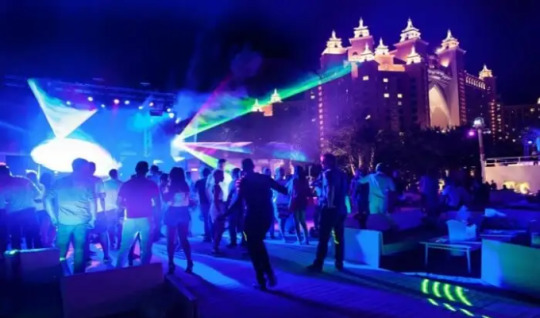
Driving down Sheikh Zayed Road in Dubai, a long eight-lane road that was lit up and busy with traffic even at two in the morning. The designer facades of the tall buildings on either side of the street reflected light. In no other place did I feel as safe returning home at 4 a.m. as I did when a student in Dubai, where I frequently spent the evenings discovering the city's clubs and hangout spots. The nature of Dubai's nights is so distinct from that of Dubai's days that it seems like a completely separate city. One has to get an emirates visa for Nigerian citizens before they can enjoy Dubai’s nightlife.
1. Go Club-Hopping
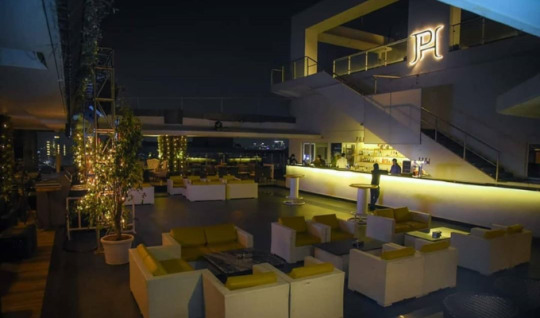
Dubai's club scene is extremely amazing and draws tourists from all over the world. Every type of nightclub can be found across the city, from opulent to edgy, so on Friday nights, you have a tonne of options! Large screens for game nights are available at Barasti (Le Meridien Mina Seyahi Beach Resort), Chi@The Lodge (Al Nasr Leisureland) has a chic atmosphere and fantastic music, Kasbar (Al Sufouh Road) is a hip spot with authentic Arabic décor, and Nasimi Beach (Atlantis) offers a breathtaking view of Atlantis as a backdrop.
2. Order Late-night Shawarma
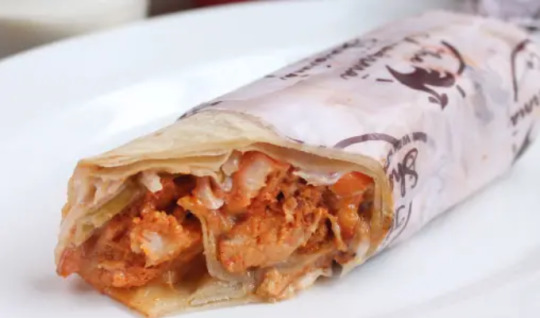
Without a Shawarma run at midnight, no trip to Dubai is truly complete. Lebanese eateries that serve this delectable pork wrap in the early hours of the morning are the spots that are bustling with the most bustle after midnight. Near the sidewalk, where the waiters collect orders from cars, many people will halt their vehicles. Aroos Damascus and Al Shami Restaurant (Al Muraqqabat Road, Deira), Al Mallah (Satwa), and Reem al Bawadi (Jumeirah Road), among others, are the greatest locations for late-night Shawarma.
3. Drive Through the City by Night
Given the excellent roads, street lighting, and well-organized traffic, driving in Dubai is a delight. Driving at night is a fantastic treat since there is less traffic, better music playing on the radio, lovely roads to go on, and a glittering city to admire. Al Mamzar, where a creek separates Dubai from Sharjah and a lovely Corniche (promenade) draws people for leisurely after-dinner strolls, is my favorite location for a long drive. You can find Filli Café directly across from this bustling location, where you can finish off your late-night trip with a cup of traditional masala chai. highly advisable
4. Walk along the Marina
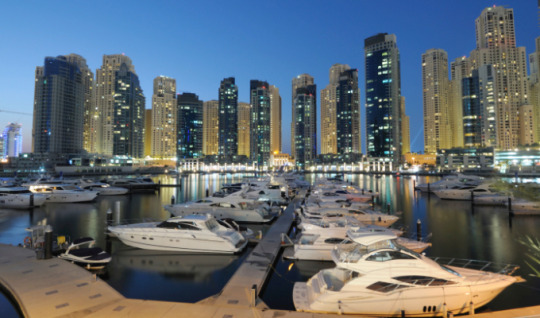
Dubai Marina is a waterfront surrounded by speedboats, luxury yachts, and boats in the more modern area of the city. Families, couples, and friends enjoy the lights from the high towers as they are exquisitely mirrored on the crystal-clear seas as they stroll along the walkway, where European-style cafes are bustling with activity all night. This is a really beautiful way to experience Dubai's nightlife.
5. Take a Puff of Sheesha at a Lounge

What would a trip to Dubai be without a sheesha cigarette? Many people still like evenings at quieter sheesha lounges, which typically have multiple screens showing live football or cricket matches, despite Dubai's reputation for having exciting nightclubs and a fantastic food and beverage scene. In addition, they frequently include lounge chairs, pool tables, board games, and video games for a laid-back evening with friends. And of course, sheesha—or hookah, as it is more widely known—in a huge variety of tastes and sizes! This is a typical Dubai night out and is a lot of fun, especially with friends!
Good to Know
In Dubai, the weekend is Friday and Saturday—not Sunday!
Tuesdays or Wednesdays are often designated as Lady's Nights in clubs and pubs. To get the best deal, schedule your girls' nights out on these days.
The Dubai government is very tough about drinking and driving, and on the weekends there are many checkpoints to catch drunk drivers and severely punish them. Since taxis are often available close to popular nightlife areas, returning home is both safe and simple.
In Dubai, the drinking age is 21, in Abu Dhabi, it is 18, and it is forbidden in Sharjah.
Drinking is not permitted in undesignated or unlicensed areas and those who do so face harsh penalties.
Apply emirates visa for Nigeria nationals to enjoy all the tourist places and attractions in Dubai.
In Dubai, there is something to do every single hour of the day or night. What are you still holding out for? Let your hair down and take full advantage of Dubai's vibrant nightlife and for this, you have to take an emirates visa for Nigeria passport holders.
#emirates visa for Nigeria citizens#apply emirates visa for Nigeria nationals#emirates visa for Nigeria passport holders#emirates visit visa#emirates visa
2 notes
·
View notes
Text
Abu Kabab, 720 N Lake Ave, Pasadena, CA 91104

U Pick Mediterranean Café became Abu Kabab a few months ago. It’s hard to see the Abu Kabab sign at night – it still looks like the U Pick sign (they covered the old sign which, when lit, is easier to see than the sign they put over it). The owner is Greek/Lebanese.
The menu is extensive and includes crispy pita bowls (it comes with different things depending on the protein you choose), plates, wraps, salads, combo plates, appetizers, sides (hummus, shirazi salad, tabouleh), baklava, and drinks. Kabobs include lamb, beef lule, chicken lule, chicken thigh, chicken breast, salmon, and lamb chops. Non-kabob options include falafel, chicken shawarma, beef shawarma, and gyros.
Chicken shawerma wrap with a choice of one side ($17): The wrap is made with a thin pita that’s wrapped around bits of chicken shawarma, pickles, garlic sauce, tomato, and French fries. It’s a thin wrap (10 inches by 2.5 inches by 1.5 inches). It reminded me of the chicken shawarma wrap from A La Beirut (similar style). The pita is pressed to make it crispy. The chicken was moist and flavorful, plus the potent garlic sauce really hit the spot. The pickles were very good (different kinds – dill, turnip). I chose yogurt cucumber as a side and there was a lot of it – didn’t go with the sandwich but I had it later and it was very good: thick, tangy, with cucumber, and dill
Falafel plate with choice of two sides ($16) and rice (subbed salad): Mr. Froyo said it was good but (1) falafel balls were dry (good flavor, no herbs), tabouleh was a bit wet, shirazi salad was wet, and the hummus was just okay. Three thin pitas were included – that’s a lot of pita. Portions were generous.
Order at the counter. The place looks nice – like a European café. There’s parking in the back.
4 out of 5 stars
By Lolia S.
0 notes